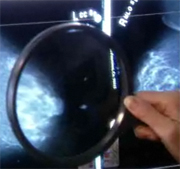
MONDAY, Jan. 17 (HealthDay News) — Among long-term breast cancer survivors, those who were treated with radiotherapy before 1984 appear to face much higher rates of death due to heart disease, new French-Swiss research indicates.
The study results, published in the Jan. 25 issue of the Journal of the American College of Cardiology, “confirm that radiotherapy for breast cancer, such as that practiced until the mid-1980s, increased the long-term risk of death from cardiac disease,” the authors said in a journal news release.
In the study, the researchers tracked nearly 4,500 women who had been treated for breast cancer between 1954 and 1984 at the Institut Gustave Roussy (IGR) in Villejuif, France.
All of the women in the study had survived their initial breast cancer diagnosis for a minimum of five years, and the study tracked such survivors for an average of 28 years, making it one of the few investigations to explore the long-term side effects of breast cancer treatment.
The analysis, based on data from medical records and national registries, found that about two-thirds of the women had been treated with radiation during the study time-frame, according to study author Florent de Vathaire of the Radiation Epidemiology Group at INSERM and the IGR, and colleagues.
The cause of death could be determined for the vast majority of the 2,637 breast cancer survivors who ultimately died before the age of 95. The investigators found that 421 died from cardiovascular disease, including 236 from cardiac diseases and 185 from vascular diseases.
The team further established that the risk of dying from heart disease was 1.76 times higher among those exposed to radiation therapy compared with those who were not exposed. In addition, the risk of dying from cardiovascular diseases as a whole was 1.56 greater among this group.
Not all types of exposure to radiation therapy appeared to have the same negative consequences for heart health. Women whose tumor was on the left side (and were therefore exposed to radiotherapy on the left side) faced a higher risk for cardiac disease than those whose tumor was located on the right side, they found.
In an editorial accompanying the study, Dr. Ronald M. Witteles, of the division of cardiovascular medicine at the Stanford University School of Medicine, described the new analysis as both “convincing” and “important.” He also cautioned that despite technological advances, radiation dosages used today among breast cancer patients “remain substantial.” Physicians, he noted, should stay vigilant with respect to the potential harm such exposure can cause.
More information
For more on breast cancer and radiation therapy, visit BreastCancer.org.

